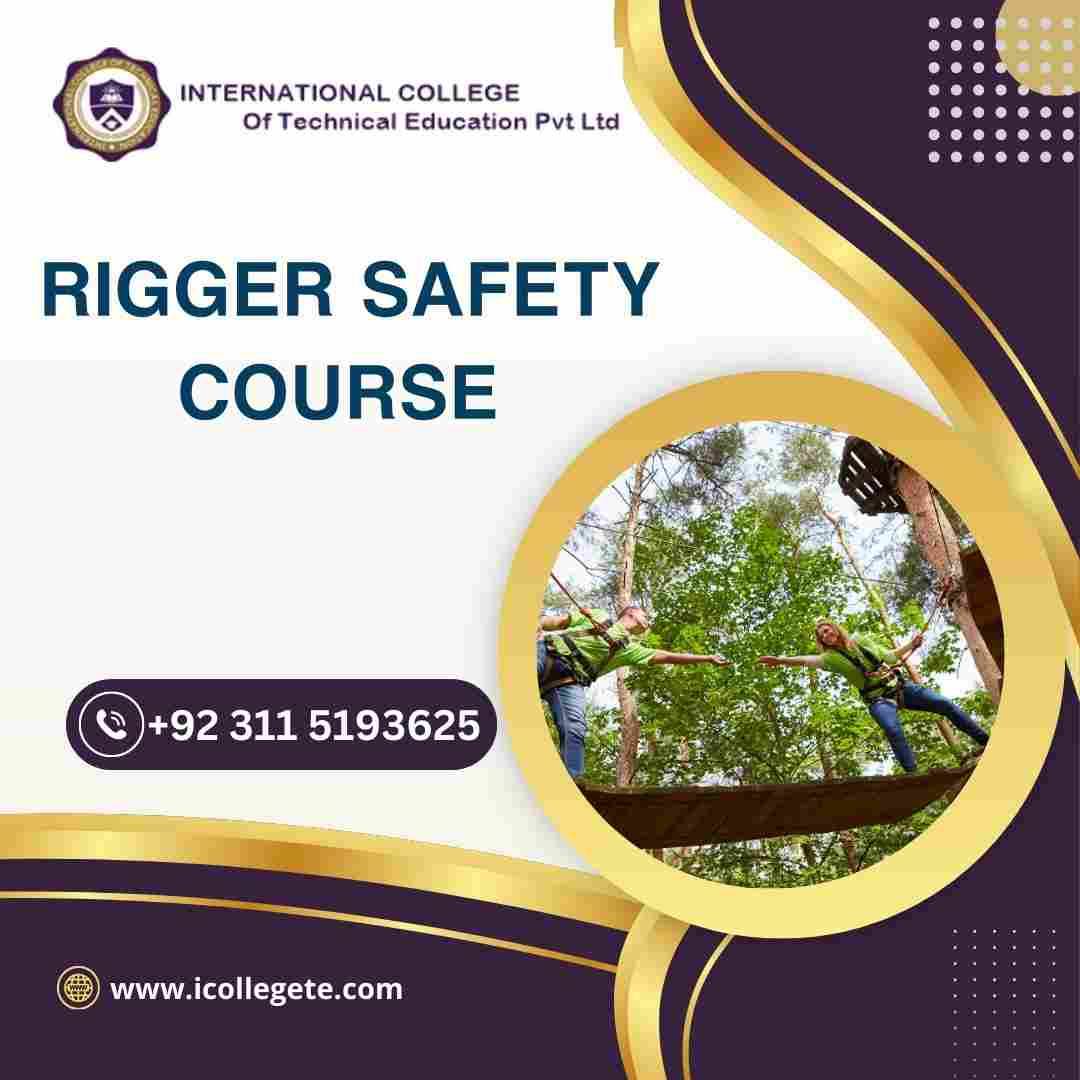The Rigger Safety Training course is designed to provide participants with comprehensive knowledge and practical skills related to safe rigging practices in various industries. This course covers essential aspects of rigging, including equipment usage, safety procedures, and risk assessment, ensuring that participants can perform rigging tasks efficiently and with a strong focus on safety. Through a combination of theoretical learning and hands-on practical exercises, participants will gain the necessary expertise to contribute to safer work environments.
Course Benefits:
By completing the Rigger Safety Training course, participants will:
Enhance Safety Awareness: Gain a deep understanding of safety protocols and best practices, reducing the risk of accidents and injuries in rigging operations.
Improve Job Prospects: Acquire a valuable skill set that is in demand across industries such as construction, manufacturing, shipping, and entertainment.
Ensure Compliance: Understand and adhere to local and international safety regulations, fostering compliance and preventing legal issues.
Boost Efficiency: Learn efficient rigging techniques that streamline operations and improve productivity while maintaining safety standards.
Confidence in Rigging: Develop the confidence to plan and execute rigging tasks, making informed decisions to protect yourself and your colleagues.
Course Learning Outcomes:
By the end of the Rigger Safety Training course, participants will be able to:
- Understand the fundamental concepts of rigging, including load calculations, center of gravity, and equipment selection.
- Identify and properly use a wide range of rigging equipment, such as slings, shackles, hooks, and hoists.
- Comprehend the principles of risk assessment and hazard identification in rigging operations.
- Apply safety regulations and best practices to various rigging scenarios, ensuring the well-being of personnel and equipment.
- Plan and execute complex rigging tasks, considering factors like load stability, weight distribution, and environmental conditions.
- Communicate effectively with team members during rigging operations, promoting a shared understanding of procedures and risks.
- Perform pre-use inspections on rigging equipment to verify their integrity and fitness for use.
- Respond appropriately to rigging emergencies and incidents, minimizing damage and ensuring the safety of personnel.
Course Study Units: The Rigger Safety Training course is divided into several study units to provide a structured learning experience:
- Introduction to Rigging Safety:
- Importance of rigging safety
- Common rigging accidents and their causes
- Role of a rigger in maintaining safety
- Rigging Equipment and Tools:
- Types of slings and their uses
- Selection and inspection of hooks, shackles, and other hardware
- Understanding hoists and cranes
- Load Characteristics and Calculations:
- Load weight estimation and center of gravity
- Load stability considerations
- Load angle effects on capacity
- Risk Assessment and Hazard Identification:
- Identifying potential hazards in rigging tasks
- Performing risk assessments and creating risk mitigation plans
- Safety Regulations and Standards:
- Local and international safety regulations
- ANSI/ASME standards for rigging equipment
- Personal protective equipment (PPE) requirements
- Rigging Procedures and Techniques:
- Proper rigging techniques for different loads
- Knots, hitches, and securing methods
- Lifting and lowering procedures
- Communication and Teamwork:
- Importance of effective communication during rigging operations
- Signal person responsibilities
- Coordination with crane operators
- Emergency Preparedness:
- Responding to rigging emergencies
- Evacuation procedures and first aid basics
- Incident reporting and investigation
Entry Requirements: There are no specific prerequisites for enrolling in the Rigger Safety Training course. However, participants should have a basic understanding of workplace safety concepts and a willingness to engage in hands-on practical exercises.
Future Progressions: Upon completing the Rigger Safety Training course, participants can explore several avenues for future progression:
- Certification: Depending on the industry and location, participants can pursue certification programs related to rigging safety, enhancing their professional credibility.
- Advanced Rigging Courses: Participants can further their expertise by enrolling in advanced rigging courses that delve deeper into specialized rigging techniques and scenarios.
- Supervisory Roles: With experience, participants can progress to supervisory roles where they oversee rigging operations and ensure compliance with safety protocols.
- Occupational Health and Safety: This course can serve as a stepping stone for individuals interested in pursuing careers in occupational health and safety management.
- Industry Specialization: Graduates can apply their rigging safety knowledge to specific industries such as construction, entertainment, maritime, or manufacturing.
Conclusion: The Rigger Safety Training course equips participants with the skills and knowledge required to perform rigging tasks safely and efficiently. By focusing on practical application, risk assessment, and adherence to safety regulations, participants will be prepared to contribute positively to their workplaces while minimizing potential hazards. This course sets the foundation for a safer working environment and opens doors to various career opportunities in industries where rigging is an integral part of operations.






